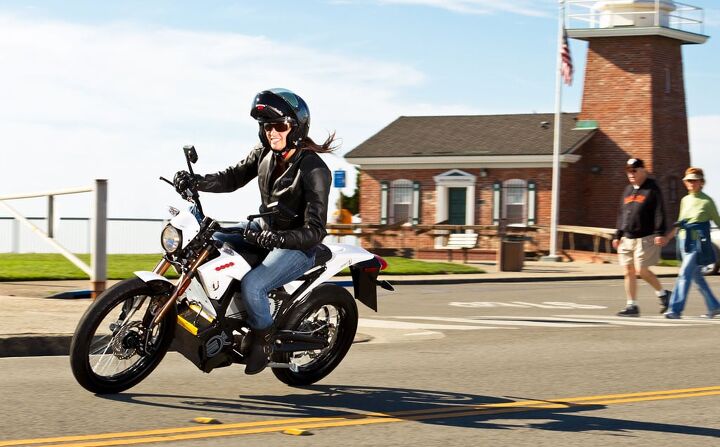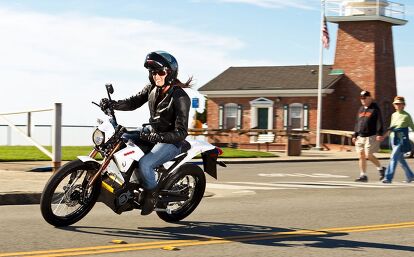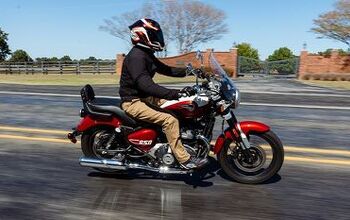NHTSA Proposes Minimum Sound Standards for Electric Vehicles

For years now, the motorcycle industry has had to design its motorcycles and their exhaust systems to stay below government-mandated sound levels, particularly with off-road motorcycles. The burgeoning electric vehicle industry may bring about the opposite now, with governments proposing minimum sound levels for the mostly silent-running electric cars and motorcycles.
The National Highway Traffic Safety Administration, a which operates under the auspices of the U.S. Department of Transportation, is proposing new minimum sound standards for electric and hybrid-powered vehicles to provide an audio cue to warn pedestrians of approaching vehicles. The concern is primarily with electric vehicles traveling at slow speeds as they generate little noise. The proposal has been in the works for a while now, stemming from the bipartisan Pedestrian Safety Enhancement Act of 2010. NHTSA estimates the proposals would result in 2800 fewer pedestrian injuries over the life of each vehicle model year.
“Safety is our highest priority, and this proposal will help keep everyone using our nation’s streets and roadways safe, whether they are motorists, bicyclists or pedestrians, and especially the blind and visually impaired,” says U.S. Transportation Secretary Ray LaHood.
To address the issue, NHTSA is proposing a new Federal Motor Vehicle Safety Standard No. 141 which would require electric vehicles be equipped with a pedestrian alert sound system generating an artificial sounds. The artificial sounds would need to be loud enough to be heard over ambient street noises when an electric vehicle is traveling faster than 18 mph. At higher speeds, even electric vehicles make enough noise to sufficiently warn pedestrians.
Manufacturers would have a range of different sounds it can choose to be installed in their vehicles. NHTSA has posted 14 sample audio clips on its website to show how these various would sound from a vehicle driving past the listener. The first two audio files are recordings of existing electric vehicles traveling at a speed of 10 kph (6.2 mph), while the other audio samples are synthesized sounds put through various filters and Doppler effects to meet the proposed sound levels. Most of the sounds are derived from audio of actual vehicles powered by internal combustion engines.
“Our proposal would allow manufacturers the flexibility to design different sounds for different makes and models while still providing an opportunity for pedestrians, bicyclists and the visually impaired to detect and recognize a vehicle and make a decision about whether it is safe to cross the street,” says David Strickland, administrator of NHTSA.
Though the proposal is primarily focused on electric and hybrid cars, it does include electric motorcycles. Even then, NHTSA admits the agency has not determined the extent to which electric motorcycles pose a greater risk to pedestrians than conventional motorcycles and did not measure motorcycle sounds for the purpose of preparing its proposal.
Interestingly, BMW is one of the bigger critics of the proposal and its effects on electric motorcycles. The German manufacturer is currently testing its first electric two wheeler, the C Evolution scooter, in Europe, and its input in NHTSA’s study suggests BMW has big plans for electric motorcycles and scooters in its future.
BMW and the Motorcycle Industry Council argue motorcyclists are better able to avoid pedestrians because their views are not obstructed by a car’s pillars and mirrors. They also argue motorcyclists are particularly alert when traveling at slower speeds such as those covered by the proposal because of the reduced stability of riding on two wheels.
The MIC and BMW also argue an artificial noise generator presents undue technical challenges electric and hybrid cars do not face, due to the the smaller size of bikes, the relative weight of the sound system to the vehicle weight and the sound system’s drain on the electric power reserves. BMW also submitted crash data for incidents involving motorcycles and pedestrians. Citing several different sources of data, BMW argues accidents between motorcycles and pedestrians represent between 0.4% and 0.7% of pedestrian fatalities. NHTSA’s own General Estimates System show only 1.07% of pedestrian injuries between 2005 and 2009 involved motorcycles.
NHTSA acknowledges the different challenges the proposed standard poses on motorcycles, but notes a speaker system isn’t the only way an electric motorcycle can meet the new standard. NHTSA will continue to seek comment on the proposed minimum sound level requirements and their impact on electric motorcycles.
[Source: NHTSA ( Sound Samples)]

Dennis has been a part of the Motorcycle.com team since 2008, and through his tenure, has developed a firm grasp of industry trends, and a solid sense of what's to come. A bloodhound when it comes to tracking information on new motorcycles, if there's a new model on the horizon, you'll probably hear about it from him first.
More by Dennis Chung































Comments
Join the conversation